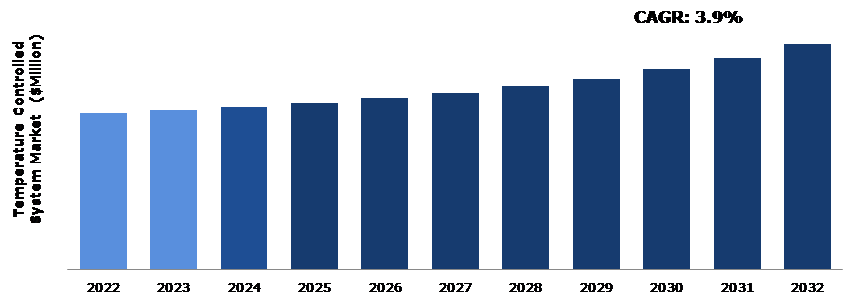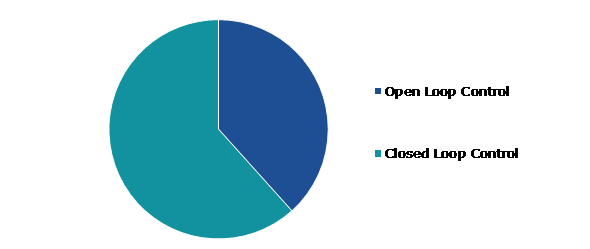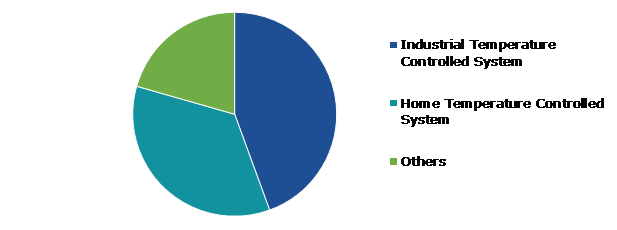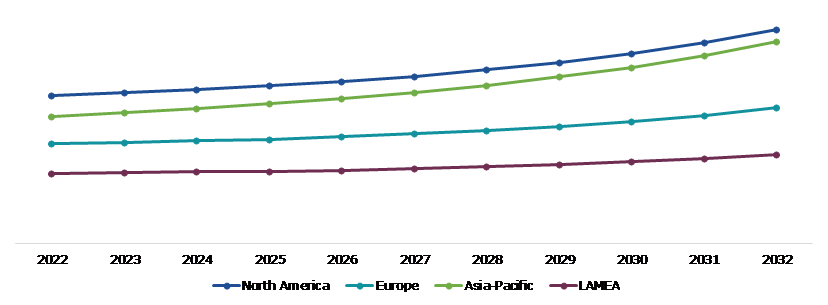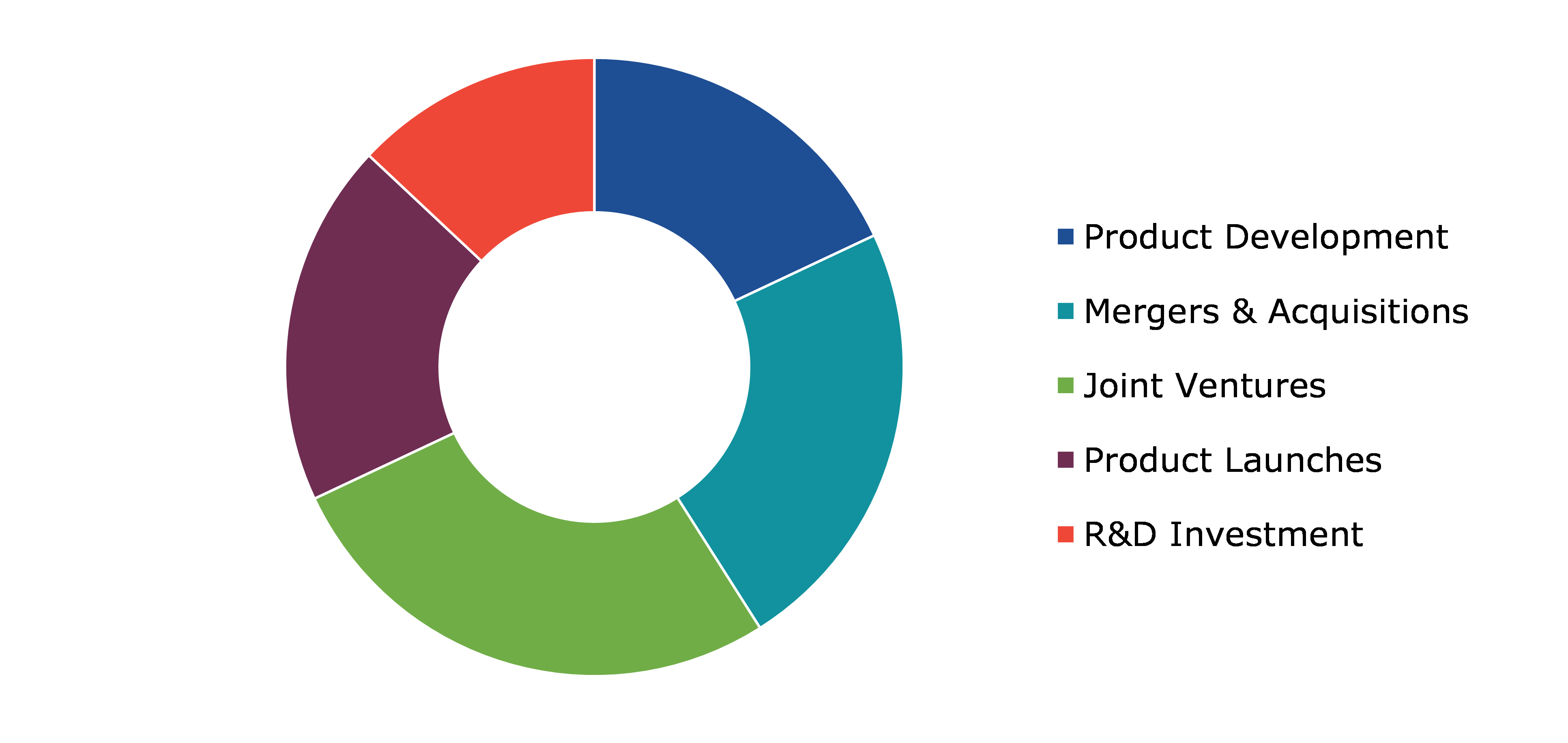Temperature Controlled System Market Report
RA09223
Temperature Controlled System Market by Type (Open Loop Control and Closed Loop Control), Application (Air Conditioning, Water Heater, Refrigerators, and Others), End User (Industrial Temperature Controlled System, Home Temperature Controlled System, and Others), and Region (North America, Europe, Asia-Pacific, and LAMEA): Global Opportunity Analysis and Industry Forecast, 2023-2032
Temperature Controlled System Overview
A Temperature Controlled System (TCS) is a complex network of components and technologies that are meant to manage and maintain a given temperature inside a defined region or for a specific process. These systems are used in a variety of industries and applications to keep temperatures within specific ranges, promoting best conditions for processes, materials, or organisms. The primary goal of a TCS is to offer precise, dependable, and responsive temperature management while limiting the influence of external causes and variations. Temperature regulation is crucial in many industrial operations, including chemical manufacture, food processing, and semiconductor production. Specific temperatures are frequently required in chemical processes for optimal reaction rates and product quality. Precision temperature control assures the safety and quality of perishable commodities in the food sector, whereas semiconductor production requires precisely regulated temperatures to produce consistent product quality.
Global Temperature Controlled System Market Analysis
The global temperature-controlled system market size was $1,758.0 million in 2022 and is predicted to grow with a CAGR of 3.9%, by generating a revenue of $2,535.2 million by 2032.
Source: Research Dive Analysis
COVID-19 Impact on the Global Temperature Controlled System Market
During the COVID-19 pandemic, there was an increase in need for cold storage and transportation facilities. The fast development and delivery of vaccinations and medications to treat the virus led to an increase in the demand for dependable cold chains. Vaccines require rigorous temperature control to be effective, sparking a global race to improve and extend current temperature-controlled infrastructure. This resulted in a major increase in investments and advances in cold storage facility design and operation, as well as the development of new temperature-monitoring devices.
The pandemic also boosted digital technology and automation in temperature-controlled systems. Remote monitoring and control are becoming more important in preserving the integrity of temperature-sensitive items while minimizing human engagement. Temperature conditions can now be tracked and analyzed in real time, improving the efficiency and reliability of temperature-controlled systems because of the integration of sensors, IoT devices, and data analytics. Automation has decreased the need on manual labor in the operation and maintenance of these systems, providing a more robust solution in the face of workforce issues posed by lockdowns and social distancing measures.
High Demand for Maintaining Product Integrity and Quality to Drive the Market Growth
The primary advantage of temperature-controlled systems is that product integrity is preserved. Maintaining precise temperature ranges helps that things retain their intended qualities, whether they are medications, vaccinations, or perishable foods. Therefore, the total quality and efficacy of the items improves, guaranteeing end-users regarding the dependability of the products they consume. Temperature regulation is critical in increasing the shelf life of various items. Manufacturers may guarantee that their goods remain viable for extended periods of time by avoiding the growth of microbes, slowing down chemical processes, and minimizing deterioration. Not only does this eliminate waste, but it also allows for more effective inventory management. Products that are temperature sensitive, such as pharmaceuticals or fresh fruit, are more vulnerable to quality deterioration. TCS not only satisfies increased customer expectations, but it also protects brand reputation by guaranteeing that items arrive in perfect condition, creating trust and loyalty. Temperature controlled systems offer a complete approach to quality control by providing real-time monitoring and data analytics. Continuous monitoring provides prompt detection and response to temperature variations, minimizing potential product damage. This proactive strategy guarantees that goods meet or surpass quality requirements on a continual basis.
High Energy Consumption to Restrain the Market Growth
One of the key factors projected to hamper the temperature controlled system market growth is the high energy consumption of TCSs. To maintain exact temperature levels, these systems frequently rely on energy-intensive components such as compressors, fans, and refrigeration units. Continuous functioning of these components, particularly in large-scale industrial settings, results in a significant need for power. This not only raises operational expenses but also puts a burden on the whole energy system, especially during high demand periods. Because of their high energy consumption, these systems may be economically unviable for some applications, and their general adoption may be limited in locations with unstable or expensive power supplies. When the refrigerants usually employed in these systems, such as hydrofluorocarbons (HFCs), are discharged into the environment, they contribute considerably to greenhouse gas emissions. As worldwide efforts to prevent climate change accelerate, the environmental impact of temperature controlled systems becomes a major concern.
Rising Usage of Temperature Controlled Systems in the Pharmaceutical Industry to Drive Excellent Opportunities
The pharmaceutical industry's strict regulatory environment is one of the key factors driving demand for temperature-controlled equipment. Regulatory authorities across the world, such as the U.S. FDA (Food and Drug Administration) and the European Medicines Agency (EMA), have created strict requirements for pharmaceutical product transportation and storage. Noncompliance can have serious implications, including product recalls and damage to pharmaceutical businesses' reputations. Therefore, the use of temperature-controlled systems is now required to ensure compliance with these rules, giving a substantial potential for firms who provide such solutions. With a rising emphasis on biologics and personalized treatment, the pharmaceutical sector is undergoing a paradigm change. Biologics, as compared to standard small-molecule medications, are complex chemicals generated from live creatures, making them more sensitive to temperature changes. Similarly, personalized medicine entails adapting medical therapy to each patient's unique traits. Both developments highlight the vital need of accurate temperature management throughout the pharmaceutical supply chain. As the discovery and manufacturing of biologics and personalized medicine continues to expand, so will the demand for sophisticated temperature-controlled systems, offering significant growth opportunities for firms who specialize in these solutions.
Global Temperature Controlled System Market Share, by Type, 2022
Source: Research Dive Analysis
The closed loop control sub-segment accounted for the highest market share in 2022. One of the key reasons is the need for greater precision and accuracy in temperature management. Pharmaceutical, semiconductor, and food processing industries demand strict temperature control to assure product quality and uniformity. Closed-loop control systems excel at maintaining a constant temperature by continually regulating the heating or cooling components in response to changes, reducing temperature swings and assuring ideal conditions for manufacturing operations. Closed-loop temperature control systems are also being driven by the rising complexity of industrial processes. As industrial systems become more multifaceted and linked, the demand for sophisticated temperature control techniques increases. Closed-loop systems offer the flexibility and responsiveness needed to control complicated thermal dynamics in a variety of industrial applications. This complexity frequently includes several variables and factors controlling temperature, and closed-loop management is useful in handling such complicated settings.
Global Temperature Controlled System Market Share, by Application, 2022
Source: Research Dive Analysis
The refrigerators sub-segment accounted for the highest market share in 2022. The rapid speed of technological innovations is one of the key elements driving the increased need for refrigerators. Manufacturers are incorporating advanced sensors, Internet of Things capabilities, and sophisticated control systems into refrigerators, allowing customers to monitor and alter temperatures remotely. This connectivity not only improves user convenience, but it also allows for greater temperature management, ensuring that delicate commodities like medications and vaccines are maintained at ideal temperatures. Market changes and consumer preferences heavily influence demand for refrigerators in temperature control systems. With a rising emphasis on health & wellness, there is a greater need for freezers that provide exact temperature control for maintaining perishable foods, medications, and vaccinations. The COVID-19 pandemic has highlighted the significance of consistent temperature control in keeping vaccines and medicines, increasing demand for specialized refrigeration technologies.
Global Temperature Controlled System Market Share, by End User, 2022
Source: Research Dive Analysis
The industrial temperature-controlled system sub-segment accounted for the highest market share in 2022. The regulatory environment that governs businesses such as pharmaceuticals, healthcare, and food has become strict. Specific temperature ranges need to be followed throughout product manufacture, storage, and transportation to ensure product efficacy, safety, and quality. Industrial temperature-controlled systems provide a dependable way to achieve these regulatory standards while minimizing the risk of product spoiling or degradation. Maintaining fragile materials, such as vaccinations, chemicals, or perishable foods, safe requires strict temperature control throughout the supply chain. Regardless of the geographical distances involved, industrial temperature-controlled systems enable businesses to maintain product quality and safety requirements. The biotechnology and pharmaceutical industries are seeing unprecedented expansion, due to an aging population, rising chronic illness prevalence, and advances in medical research. Many of these items, such as vaccinations and biologics, are extremely temperature sensitive. From production facilities to distribution networks, industrial temperature-controlled systems play a critical role in preserving the efficacy of these products.
Global Temperature Controlled System Market Size & Forecast, by Region, 2022-2032 ($Million)
Source: Research Dive Analysis
The North America temperature controlled system market generated the highest revenue in 2022. The capacity to retain the quality and integrity of perishable items is one of the key benefits of the temperature-controlled systems. The freshness of products, whether medications, fresh food, or other temperature-sensitive commodities, can be maintained by rigorous temperature management and monitoring. The temperature-controlled system's accuracy reduces the possibility of product loss during transit. These systems prevent decaying, bacterial development, and other variables that might risk shipment quality. This benefits not only manufacturers and suppliers in the region, but it also helps to reduce food waste and ensure the availability of high-quality products for consumers. Because of the dependability of North America's temperature-controlled infrastructure, enterprises are expected to expand into new markets. Companies may explore new markets and fulfil the rising demand for specialized products with the knowledge that sensitive items can be carried over long distances without sacrificing quality.
Competitive Scenario in the Global Temperature Controlled System Market
Partnerships, collaborations, and technological innovation are common strategies followed by major market players. For instance, on August 23, 2023, LG Electronics Singapore introduced the innovative Multi V I Variable Refrigerant Flow (VRF) technology. The LG Multi V I is a cutting-edge integrated system that blends innovation, sustainability, and unrivalled performance to meet the increasing market need for sophisticated heating, ventilation, and air conditioning (HVAC) systems. Whether a company owner is searching for optimum air conditioning for a commercial area, or a homeowner is looking to enhance their living environment, the Multi V I delivers the ideal combination of innovative technology and ecological responsibility.
Source: Research Dive Analysis
Some of the leading temperature controlled system market players are Carrier Global Corporation, Daikin Industries, Ltd., Johnson Controls, International plc, Siemens AG, Emerson Electric Co., Honeywell International Inc., Mitsubishi Electric Corporation, Schneider Electric SE, Ingersoll Rand, and LG Electronics Inc.
| Aspect | Particulars |
| Historical Market Estimations | 2020-2021 |
| Base Year for Market Estimation | 2022 |
| Forecast Timeline for Market Projection | 2023-2032 |
| Geographical Scope | North America, Europe, Asia-Pacific, and LAMEA |
| Segmentation by Type |
|
| Segmentation by Application |
|
| Segmentation by End User |
|
| Key Companies Profiled |
|
Q1. What is the size of the global temperature controlled system market?
A. The size of the global temperature controlled system market was $1,758.0 million in 2022 and is projected to reach $2,535.2 million by 2032.
Q2. Which are the major companies in the temperature controlled system market?
A. Carrier Global Corporation, Daikin Industries, Ltd., Johnson Controls, International plc, Siemens AG, Emerson Electric Co., Honeywell International Inc., Mitsubishi Electric Corporation, Schneider Electric SE, Ingersoll Rand, and LG Electronics Inc. are some of the key players in the global temperature controlled system.
Q3. Which region, among others, possesses greater investment opportunities in the future?
A. Asia Pacific possesses great investment opportunities for investors in the future.
Q4. What will be the growth rate of the Asia-Pacific temperature controlled system market?
A. The Asia-Pacific temperature controlled system market is anticipated to grow at 5.0% CAGR during the forecast period.
Q5. What are the strategies opted by the leading players in this market?
A. Partnerships, collaborations, and technological innovation are the key strategies opted by the operating companies in this market.
Q6. Which companies are investing more on R&D practices?
A. Ingersoll Rand and Schneider Electric SE are the companies investing more on R&D activities for developing new products and technologies.
1. Research Methodology
1.1. Desk Research
1.2. Real time insights and validation
1.3. Forecast model
1.4. Assumptions and forecast parameters
1.5. Market size estimation
1.5.1. Top-down approach
1.5.2. Bottom-up approach
2. Report Scope
2.1. Market definition
2.2. Key objectives of the study
2.3. Report overview
2.4. Market segmentation
2.5. Overview of the impact of COVID-19 on global temperature controlled system market
3. Executive Summary
4. Market Overview
4.1. Introduction
4.2. Growth impact forces
4.2.1. Drivers
4.2.2. Restraints
4.2.3. Opportunities
4.3. Market value chain analysis
4.3.1. List of raw material suppliers
4.3.2. List of manufacturers
4.3.3. List of distributors
4.4. Innovation & sustainability matrices
4.4.1. Technology matrix
4.4.2. Regulatory matrix
4.5. Porter’s five forces analysis
4.5.1. Bargaining power of suppliers
4.5.2. Bargaining power of consumers
4.5.3. Threat of substitutes
4.5.4. Threat of new entrants
4.5.5. Competitive Rivalry Intensity
4.6. PESTLE analysis
4.6.1. Political
4.6.2. Economical
4.6.3. Social
4.6.4. Technological
4.6.5. Legal
4.6.6. Environmental
4.7. Impact of COVID-19 on temperature controlled system market
4.7.1. Pre-covid market scenario
4.7.2. Post-covid market scenario
5. Temperature Controlled System Market Analysis, By Type
5.1. Overview
5.2. Open Loop Control
5.2.1. Definition, key trends, growth factors, and opportunities
5.2.2. Market size analysis, by region, 2022-2032
5.2.3. Market share analysis, by country, 2022-2032
5.3. Close Loop Control
5.3.1. Definition, key trends, growth factors, and opportunities
5.3.2. Market size analysis, by region, 2022-2032
5.3.3. Market share analysis, by country, 2022-2032
5.4. Research Dive Exclusive Insights
5.4.1. Market attractiveness
5.4.2. Competition heatmap
6. Temperature Controlled System Market Analysis, by Application
6.1. Overview
6.2. Air Conditioning
6.2.1. Definition, key trends, growth factors, and opportunities
6.2.2. Market size analysis, by region, 2022-2032
6.2.3. Market share analysis, by country, 2022-2032
6.3. Water Heater
6.3.1. Definition, key trends, growth factors, and opportunities
6.3.2. Market size analysis, by region, 2022-2032
6.3.3. Market share analysis, by country, 2022-2032
6.4. Refrigerators
6.4.1. Definition, key trends, growth factors, and opportunities
6.4.2. Market size analysis, by region, 2022-2032
6.4.3. Market share analysis, by country, 2022-2032
6.5. Others
6.5.1. Definition, key trends, growth factors, and opportunities
6.5.2. Market size analysis, by region, 2022-2032
6.5.3. Market share analysis, by country, 2022-2032
6.6. Research Dive Exclusive Insights
6.6.1. Market attractiveness
6.6.2. Competition heatmap
7. Temperature Controlled System Market Analysis, by End User
7.1. Overview
7.2. Industrial Temperature Controlled System
7.2.1. Definition, key trends, growth factors, and opportunities
7.2.2. Market size analysis, by region, 2022-2032
7.2.3. Market share analysis, by country, 2022-2032
7.3. Home Temperature Controlled System
7.3.1. Definition, key trends, growth factors, and opportunities
7.3.2. Market size analysis, by region, 2022-2032
7.3.3. Market share analysis, by country, 2022-2032
7.4. Others
7.4.1. Definition, key trends, growth factors, and opportunities
7.4.2. Market size analysis, by region, 2022-2032
7.4.3. Market share analysis, by country, 2022-2032
7.5. Research Dive Exclusive Insights
7.5.1. Market attractiveness
7.5.2. Competition heatmap
8. Temperature Controlled System Market, by Region
8.1. North America
8.1.1. U.S.
8.1.1.1. Market size analysis, by Type, 2022-2032
8.1.1.2. Market size analysis, by Application, 2022-2032
8.1.1.3. Market size analysis, by End User, 2022-2032
8.1.2. Canada
8.1.2.1. Market size analysis, by Type, 2022-2032
8.1.2.2. Market size analysis, by Application, 2022-2032
8.1.2.3. Market size analysis, by End User, 2022-2032
8.1.3. Mexico
8.1.3.1. Market size analysis, by Type, 2022-2032
8.1.3.2. Market size analysis, by Application, 2022-2032
8.1.3.3. Market size analysis, by End User, 2022-2032
8.1.4. Research Dive Exclusive Insights
8.1.4.1. Market attractiveness
8.1.4.2. Competition heatmap
8.2. Europe
8.2.1. Germany
8.2.1.1. Market size analysis, by Type, 2022-2032
8.2.1.2. Market size analysis, by Application, 2022-2032
8.2.1.3. Market size analysis, by End User, 2022-2032
8.2.2. UK
8.2.2.1. Market size analysis, by Type, 2022-2032
8.2.2.2. Market size analysis, by Application, 2022-2032
8.2.2.3. Market size analysis, by End User, 2022-2032
8.2.3. France
8.2.3.1. Market size analysis, by Type, 2022-2032
8.2.3.2. Market size analysis, by Application, 2022-2032
8.2.3.3. Market size analysis, by End User, 2022-2032
8.2.4. Spain
8.2.4.1. Market size analysis, by Type, 2022-2032
8.2.4.2. Market size analysis, by Application, 2022-2032
8.2.4.3. Market size analysis, by End User, 2022-2032
8.2.5. Italy
8.2.5.1. Market size analysis, by Type, 2022-2032
8.2.5.2. Market size analysis, by Application, 2022-2032
8.2.5.3. Market size analysis, by End User, 2022-2032
8.2.6. Rest of Europe
8.2.6.1. Market size analysis, by Type, 2022-2032
8.2.6.2. Market size analysis, by Application, 2022-2032
8.2.6.3. Market size analysis, by End User, 2022-2032
8.2.7. Research Dive Exclusive Insights
8.2.7.1. Market attractiveness
8.2.7.2. Competition heatmap
8.3. Asia-Pacific
8.3.1. China
8.3.1.1. Market size analysis, by Type, 2022-2032
8.3.1.2. Market size analysis, by Application, 2022-2032
8.3.1.3. Market size analysis, by End User, 2022-2032
8.3.2. Japan
8.3.2.1. Market size analysis, by Type, 2022-2032
8.3.2.2. Market size analysis, by Application, 2022-2032
8.3.2.3. Market size analysis, by End User, 2022-2032
8.3.3. India
8.3.3.1. Market size analysis, by Type, 2022-2032
8.3.3.2. Market size analysis, by Application, 2022-2032
8.3.3.3. Market size analysis, by End User, 2022-2032
8.3.4. Australia
8.3.4.1. Market size analysis, by Type, 2022-2032
8.3.4.2. Market size analysis, by Application, 2022-2032
8.3.4.3. Market size analysis, by End User, 2022-2032
8.3.5. Indonesia
8.3.5.1. Market size analysis, by Type, 2022-2032
8.3.5.2. Market size analysis, by Application, 2022-2032
8.3.5.3. Market size analysis, by End User, 2022-2032
8.3.6. Rest of Asia-Pacific
8.3.6.1. Market size analysis, by Type, 2022-2032
8.3.6.2. Market size analysis, by Application, 2022-2032
8.3.6.3. Market size analysis, by End User, 2022-2032
8.3.7. Research Dive Exclusive Insights
8.3.7.1. Market attractiveness
8.3.7.2. Competition heatmap
8.4. LAMEA
8.4.1. Brazil
8.4.1.1. Market size analysis, by Type, 2022-2032
8.4.1.2. Market size analysis, by Application, 2022-2032
8.4.1.3. Market size analysis, by End User, 2022-2032
8.4.2. UAE
8.4.2.1. Market size analysis, by Type, 2022-2032
8.4.2.2. Market size analysis, by Application, 2022-2032
8.4.2.3. Market size analysis, by End User, 2022-2032
8.4.3. South Africa
8.4.3.1. Market size analysis, by Type, 2022-2032
8.4.3.2. Market size analysis, by Application, 2022-2032
8.4.3.3. Market size analysis, by End User, 2022-2032
8.4.4. Argentina
8.4.4.1. Market size analysis, by Type, 2022-2032
8.4.4.2. Market size analysis, by Application, 2022-2032
8.4.4.3. Market size analysis, by End User, 2022-2032
8.4.5. Rest of LAMEA
8.4.5.1. Market size analysis, by Type, 2022-2032
8.4.5.2. Market size analysis, by Application, 2022-2032
8.4.5.3. Market size analysis, by End User, 2022-2032
8.4.6. Research Dive Exclusive Insights
8.4.6.1. Market attractiveness
8.4.6.2. Competition heatmap
9. Competitive Landscape
9.1. Top winning strategies, 2022
9.1.1. By strategy
9.1.2. By year
9.2. Strategic overview
9.3. Market share analysis, 2022
10. Company Profiles
10.1. Carrier Global Corporation
10.1.1. Overview
10.1.2. Business segments
10.1.3. Product portfolio
10.1.4. Financial performance
10.1.5. Recent developments
10.1.6. SWOT analysis
10.2. Daikin Industries, Ltd.
10.2.1. Overview
10.2.2. Business segments
10.2.3. Product portfolio
10.2.4. Financial performance
10.2.5. Recent developments
10.2.6. SWOT analysis
10.3. Johnson Controls International plc
10.3.1. Overview
10.3.2. Business segments
10.3.3. Product portfolio
10.3.4. Financial performance
10.3.5. Recent developments
10.3.6. SWOT analysis
10.4. Siemens AG
10.4.1. Overview
10.4.2. Business segments
10.4.3. Product portfolio
10.4.4. Financial performance
10.4.5. Recent developments
10.4.6. SWOT analysis
10.5. Emerson Electric Co
10.5.1. Overview
10.5.2. Business segments
10.5.3. Product portfolio
10.5.4. Financial performance
10.5.5. Recent developments
10.5.6. SWOT analysis
10.6. Honeywell International Inc
10.6.1. Overview
10.6.2. Business segments
10.6.3. Product portfolio
10.6.4. Financial performance
10.6.5. Recent developments
10.6.6. SWOT analysis
10.7. Mitsubishi Electric Corporation
10.7.1. Overview
10.7.2. Business segments
10.7.3. Product portfolio
10.7.4. Financial performance
10.7.5. Recent developments
10.7.6. SWOT analysis
10.8. Schneider Electric SE
10.8.1. Overview
10.8.2. Business segments
10.8.3. Product portfolio
10.8.4. Financial performance
10.8.5. Recent developments
10.8.6. SWOT analysis
10.9. Ingersoll Rand
10.9.1. Overview
10.9.2. Business segments
10.9.3. Product portfolio
10.9.4. Financial performance
10.9.5. Recent developments
10.9.6. SWOT analysis
10.10. LG Electronics Inc
10.10.1. Overview
10.10.2. Business segments
10.10.3. Product portfolio
10.10.4. Financial performance
10.10.5. Recent developments
10.10.6. SWOT analysis
Personalize this research
- Triangulate with your own data
- Request your format and definition
- Get a deeper dive on a specific application, geography, customer or competitor
- + 1-888-961-4454 Toll - Free
- support@researchdive.com

